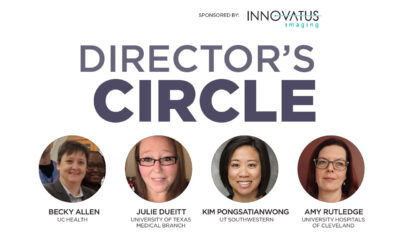

By Mark Watts
I am as guilty as the next overworked health care leader. I called an employee into my office. “Joe, I have a log that shows you were late three days out of the last 10. I cannot have this because you are letting the rest of the team down and the shift communication hand-off is missed. I must write you up and consider this a verbal warning. I need to run to a budget meeting now, I hope you listened to me and correct this behavior.”
There is my point of view of the “behavior” that I wanted to be changed.
If any of you have tried to lose weight, exercise more, stop smoking or lower your blood pressure you know behavior change is hard.
Well-meaning organizations in health care have started “hospital at home” programs. They plan to move the care that is performed bedside in an office or hospital into the home. This is a type of “home work” that needs planning a number of resources, equipment and personnel. This moves the location but uses the same model to address the patient’s needs. Like I did in the opening of the article, these hospital to home programs used data to justify the actions taken, late for work or uncontrolled AC1. These behaviors are unacceptable and must be corrected.
Will this employee/patient change?
Clinicians need to work with patients to understand not only what’s the matter with their biology, but also what matters to their biography.
Before we rush in with an answer, that reduces cost and improves outcomes, we should ask better questions. One in three middle-aged Americans has a chronic health condition, the average Medicare patient has three.
We should be able to leapfrog the current health care system model to meet the needs of this chronic conditions population with new and innovative tools. The shift of the labor cost of care can be moved to the patient by proper system designs. This move makes the patient an active participant and a vested partner in their individual wellness journey.
We must adapt available tools like smartphones, text messaging platforms for patient engagement, education, and medication adherence with the option to reach a caregiver via telemedicine with questions. The average cost is $60 a month.
We need to do this before a flair-up that causes a 911 call/ambulance/emergency room visits – average cost $16,000.
To help correct the behaviors we want patients to correct, we must engage in the causes of this behavior and give them motivational coaching to change.
Some tough but quick questions to ask via text may include:
- Do you have access to your medication?
- Do you understand the medication user instructions?
- Do you understand why you are taking this medication?
This shift from resource-intensive bedside care to individualized remote care collaboration with patients is a model for cost control and healthier communities.
Asking the right question at the right time can make all the difference.
“How are you?” is something I should have asked the employee from the example I used to start this column. And is something we should be asking our patients at home.
A simple open-ended question that allows the patient to drive the engagement and alert you of changes to conditions and/or reinforces the caring part of health care. This research-proven technique has prevented human suffering and saved countless lives in HIV treatment adherence in Africa.
If I had started there with “Joe” in my example, he could have told me that his daughter was going through a divorce, and he loaned her his car to her so she could look for jobs. He could have told me that he has been riding the bus to and from work. He could have explained that the bus sometimes runs late due to traffic.
I did not ask, at first, I just needed him to change his behavior without doing my homework.
– Mark Watts is the enterprise imaging director at Fountain Hills Medical Center.








